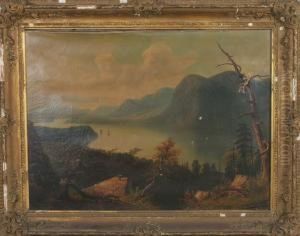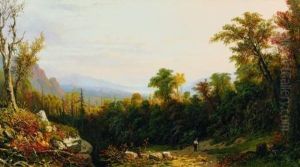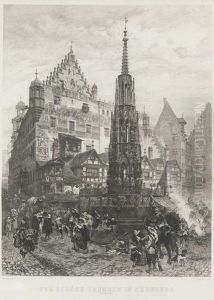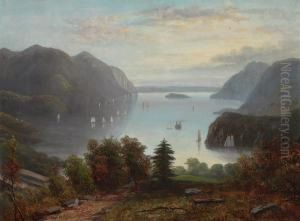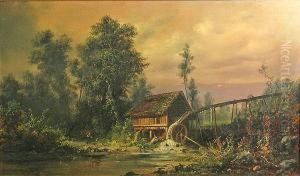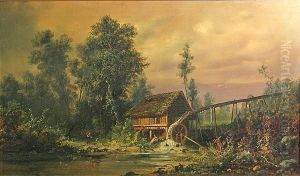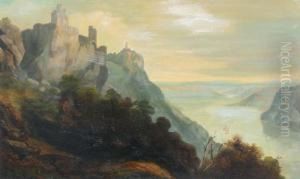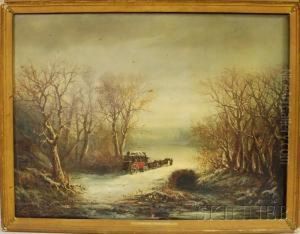Paul I Ritter Paintings
Paul I Ritter was a German artist known for his contributions to landscape and architectural painting. Born on April 6, 1853, in Nuremberg, Germany, Ritter grew up in a time when the Romantic movement was giving way to Realism, and these influences are evident in his work. His father, Paul Ritter the Elder, was also a painter, providing a nurturing environment for his artistic development from a young age. Ritter pursued his art education at the Academy of Fine Arts Nuremberg, where he honed his skills and developed a keen interest in capturing the essence of nature and the grandeur of architecture.
Throughout his career, Ritter was particularly fascinated with the landscapes and cities of Bavaria and the Rhineland, often portraying these regions with a blend of accuracy and idealism. His works are characterized by their meticulous detail, vibrant colors, and the ability to evoke a sense of place. Ritter was a master at using light to enhance the mood of his paintings, often depicting scenes at dawn or dusk, when the light casts long shadows and gives the landscape a mystical quality.
Paul I Ritter's architectural paintings are equally noteworthy. He had a profound appreciation for the Gothic and Romanesque styles, and his paintings of cathedrals, castles, and town squares are celebrated for their historical accuracy and the way they capture the architectural beauty and significance of these structures. His work in this genre not only reflects his technical skill but also his deep respect for Germany's cultural heritage.
Ritter's contributions to the art world were recognized in his time. He was a member of several art associations and exhibited his work widely, both in Germany and abroad. Despite the changing trends in art during his lifetime, Ritter remained true to his stylistic principles, blending elements of Romanticism with Realism in a way that was uniquely his own.
Paul I Ritter passed away on December 12, 1925, in Regensburg, Germany. His legacy lives on through his paintings, which continue to be appreciated for their beauty, technical prowess, and historical value. Ritter's work is represented in numerous public and private collections, and he is remembered as one of the important German landscape and architectural painters of his era.
